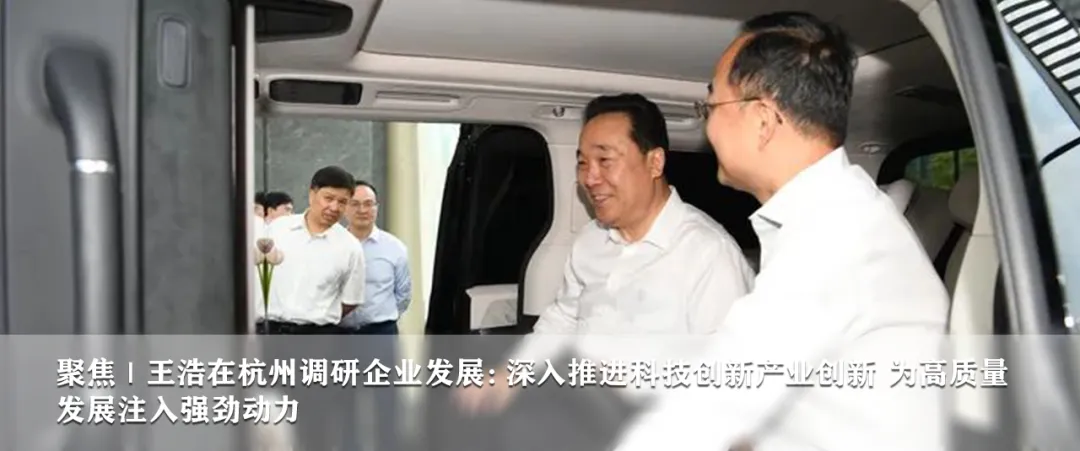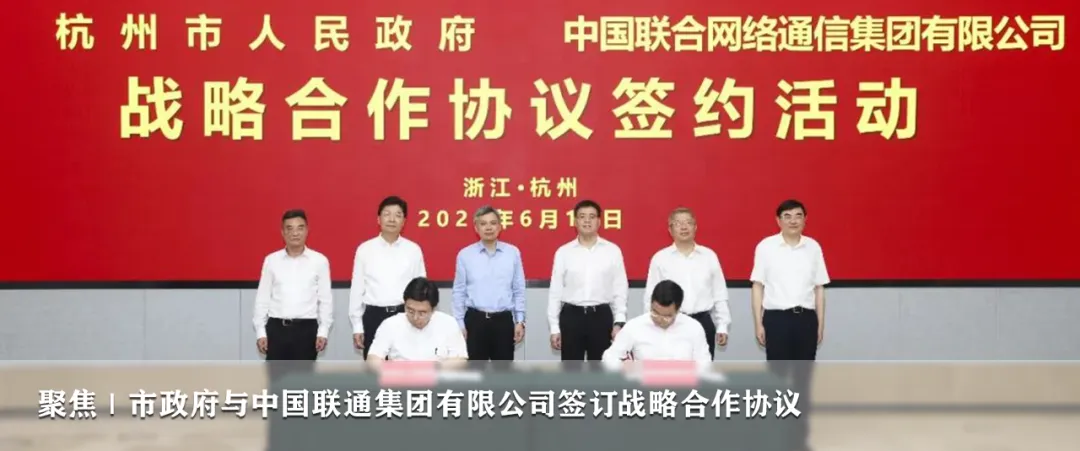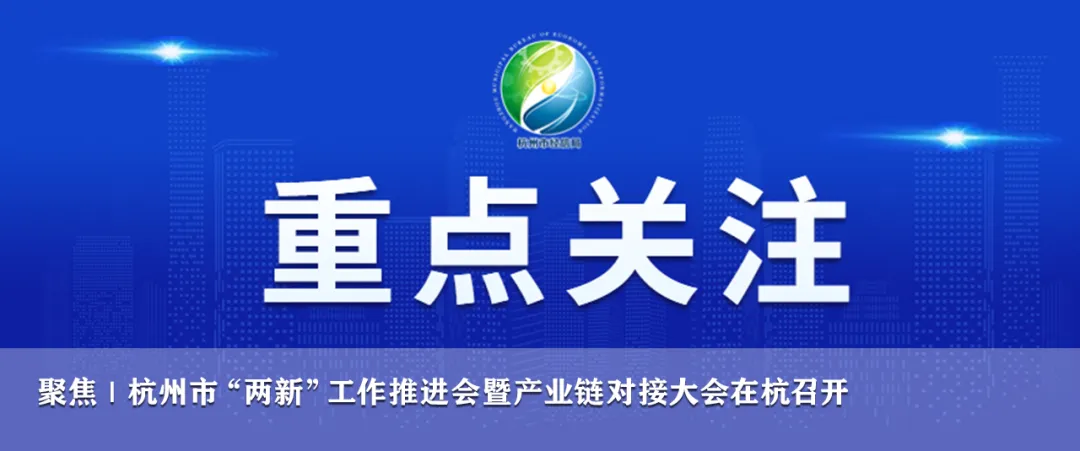Opening Remarks
Currently, artificial intelligence (AI) is integrating into various industries, becoming a key engine for accelerating the development of new productive forces tailored to local conditions.
Hangzhou, as a national pilot zone for the innovation and development of the new generation of artificial intelligence and a leading area for AI applications, prioritizes the implementation of the “AI+” initiative as a key task in deepening the “number-driven economic innovation” development project.
The manufacturing sector is the main battlefield for artificial intelligence, and the integration of digital and physical realms is attracting widespread attention. In response, the Municipal Economic and Information Bureau has collaborated with Hangzhou Daily to launch the series “Because of AI – Unlocking New Manufacturing Landscapes” to showcase the innovative applications of “AI+ Manufacturing”.
AI brings warmth, making machines no longer cold; it endows machines with vigorous “vitality”, giving soul to industrial upgrades.
How intelligent are the robots from Hangzhou companies? The robots from Hangzhou Hikvision Robotics Co., Ltd. (hereinafter referred to as “Hikvision”) are adept at planning and possess strong teamwork skills: they can autonomously plan routes and transport heavy items, and different types of robots can coordinate with each other to enhance work efficiency; the robots from Hangzhou Yushu Technology Co., Ltd. (hereinafter referred to as “Yushu Technology”) are crafted with cutting-edge technology to become new human partners: they can interact with people, serve as guide dogs, and inspect dangerous areas on behalf of humans; companies like Cainiao Network Technology Co., Ltd. and NetEase Fuxi have also established technological advantages in intelligent perception and decision-making for robots… AI is creating a new storm, refreshing various industries wherever it goes.
Today, Hangzhou’s robot companies are opening up new application scenarios. According to statistics from the Hangzhou Municipal Economic and Information Bureau (Hangzhou Digital Economy Bureau), there are over 200 enterprises in the city engaged in intelligent robot systems and components, with a total output value exceeding 15 billion yuan last year. Ten specialized and innovative “little giant” companies have gathered, covering key links in the industry chain such as components, bodies, and system integration, with the overall level of technology research and development and industrial development leading in the country.



In the dark, nearly a thousand robots are simultaneously transporting goods.
Who is the “conductor”?
At the Panasonic Hangzhou factory, even with the warehouse lights off, transportation tasks can be efficiently completed every day, making it a true “dark factory”.
There is a joint operation team composed of 21 picking robots and 11 lurking robots, which, by planning the optimal paths for robot operation, can handle over 1,200 pallets of raw materials and over 600 pallets of finished products daily.
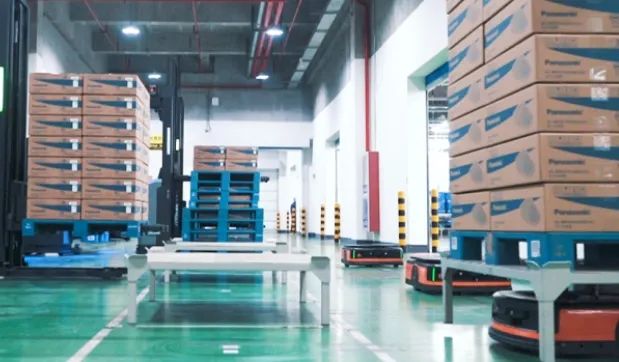
“As the business expands, the original production model can no longer keep up with the current production pace. To improve production efficiency, we introduced Hikvision’s intelligent handling equipment to conduct automated operations without manual entry and exit of goods.” The factory manager calculated that after the introduction, the warehouse management costs could be reduced by 38% annually.
This scene is not only unfolding in Hangzhou. At Xiaomi Logistics in Beijing, at the ancient tea horse road in Yunnan’s Jingmai Mountain, and in the Changan Automobile production workshop in Nanjing… the three-dimensional storage and retrieval of goods, cross-floor transportation, and lifting and delivery of vehicle bodies are all handled by them, with seamless connections between different types of robots, resulting in smooth overall operations.
“Hikvision has built a panoramic 3D labeled map based on a large model, enabling AMRs (Autonomous Mobile Robots) to have a more comprehensive understanding, effectively improving the recognition accuracy of point cloud recognition, video identification detection, and various other perceptions.” Hikvision’s CEO Jia Yonghua explained the secret to the robots’ efficient operation, “In the factory, nearly a thousand robots need to interact dynamically with humans and other machines. To achieve quick responses, only through AI can we achieve ‘intellectual’ upgrades.”
Currently, relying on AI, Hikvision’s robots have been widely applied in industries such as automotive, photovoltaics, lithium batteries, and 3C, achieving logistics automation and intelligence. According to statistics, since its establishment, Hikvision has served over 17,000 customers across more than 200 sub-industries.
In Hangzhou, a number of technological “leaders” have emerged: Hangzhou Hikvision Robotics Co., Ltd., Zhejiang Huarui Technology Co., Ltd., and Zhejiang Guozi Robot Technology Co., Ltd. are at the forefront of the machine vision and AGV (Automated Guided Vehicle) fields, ranking among the top three in national sales; Hangzhou Forklift Group Co., Ltd.’s intelligent unmanned forklifts have international leading sales, and intelligent construction machinery has entered mass production.



Carrying 50 Kilograms
Why the Power Plant Inspection Robot Doesn’t Fall Easily
At the cable intelligent operation and inspection control center of the State Grid Beijing Cable Company, staff set periodic tasks in the background, and Yushu Technology’s quadruped robot B2 can autonomously navigate along predetermined routes for inspections in underground power tunnels.
Equipped with 3D laser radar and dual-light gimbal cameras, B2 has an “eagle eye” and, combined with AI, possesses a smart brain that can adjust its stride promptly and accurately according to terrain elevation and avoid obstacles.
“B2 has a strong ability to maintain balance. During inspections, even if it falls off the path, it can get back up by itself, and it climbs stairs steadily,” said the head of the center’s status detection class. After installing intelligent sensors such as visible light, high-precision infrared imaging, partial discharge detection, and gas detection, it can also achieve automatic data collection.
In the underground power tunnel, B2 inspects while walking, with a robotic arm mounted on its back equipped with a camera, adjusting its height based on the inspection points. “Some dials cannot provide real-time data feedback and require human reading of values, but B2 can already replace humans for this task,” said Huang Jiawei, head of marketing at Yushu Technology. In 2023, Yushu Technology has reached cooperation with several substations for B2 to conduct inspection work, and this year, Yushu Technology officially began working with the State Grid.
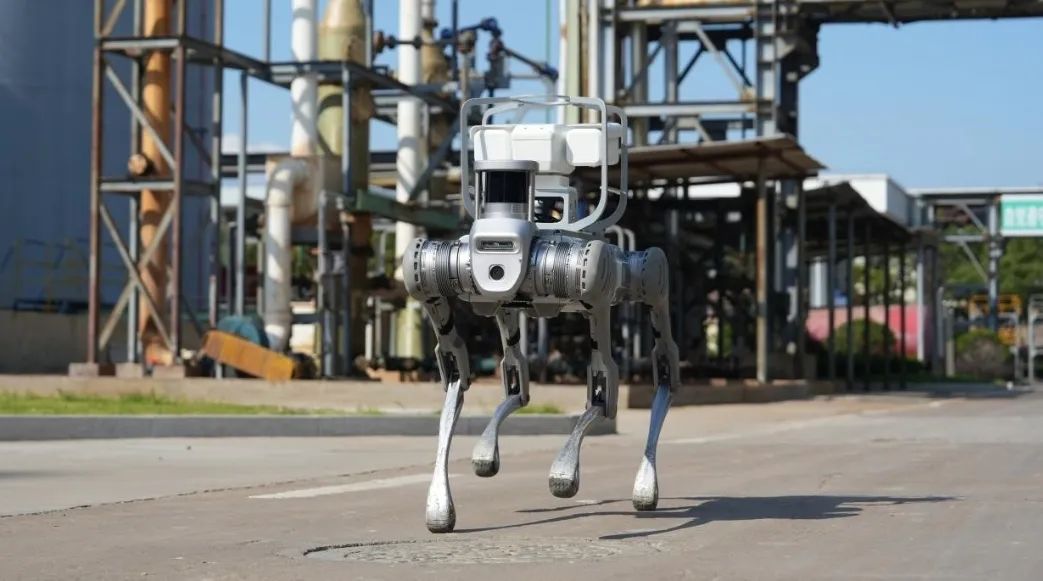
“B2 has a maximum load of 50 kilograms. Based on customer needs, we equip it with different robotic arms to handle various tasks.” Wang Xingxing, founder and CEO of Yushu Technology, is confident about exploring new scenarios in the future.
With strength breaking through, Hangzhou’s inspection robots are ushering in a broader market. In the future, the State Grid Beijing Cable Company plans to strengthen cooperation with companies like Yushu Technology to promote digital unmanned inspection technology to core areas. Products from companies like Hangzhou Yunshenchu Technology Co., Ltd. and Hangzhou Shenhao Technology Co., Ltd. are also being widely applied in power grids, rail transit, and energy chemical industries.
✦
Selected Previous Content
